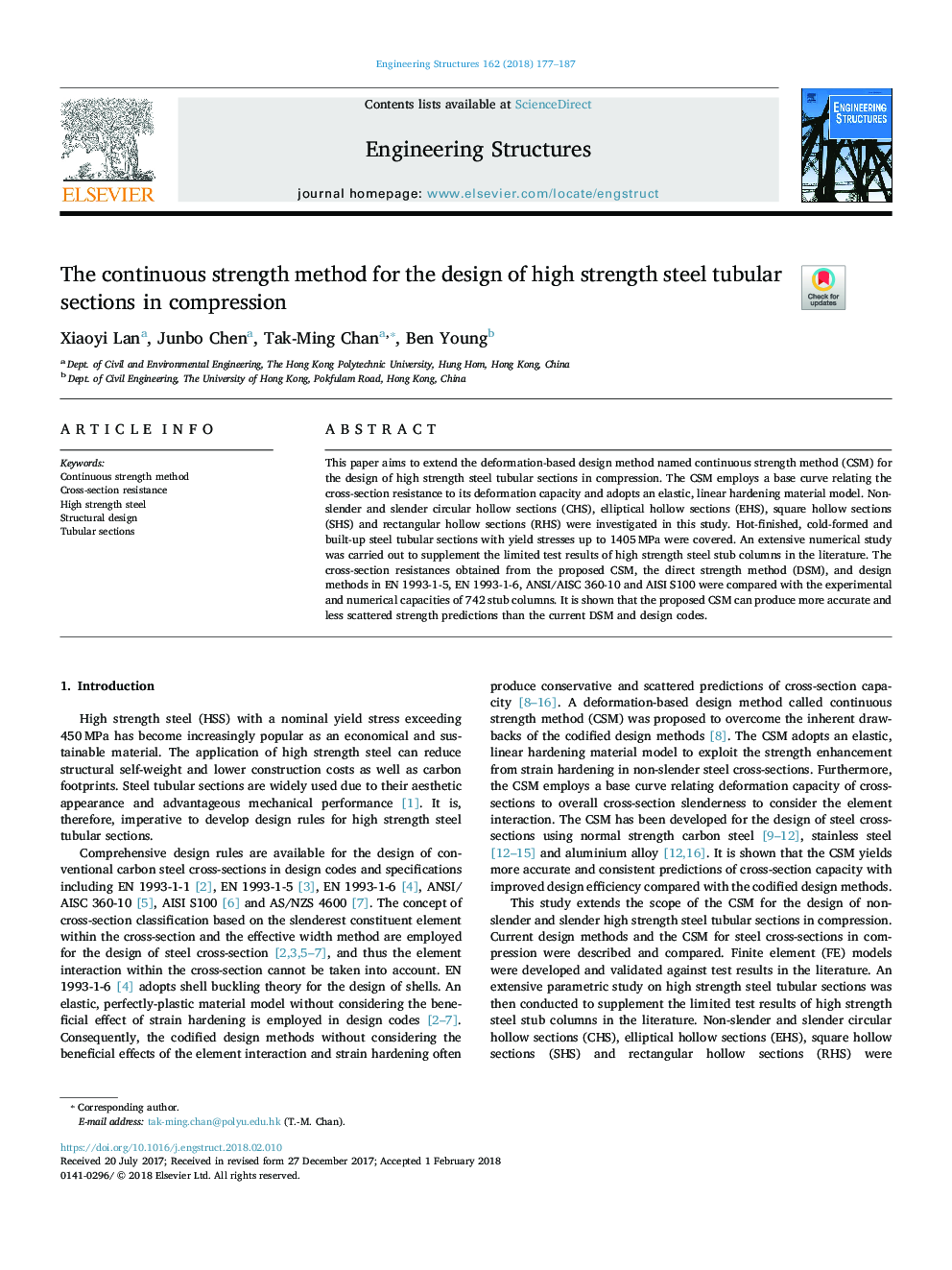| Article ID | Journal | Published Year | Pages | File Type |
|---|---|---|---|---|
| 6737996 | Engineering Structures | 2018 | 11 Pages |
Abstract
This paper aims to extend the deformation-based design method named continuous strength method (CSM) for the design of high strength steel tubular sections in compression. The CSM employs a base curve relating the cross-section resistance to its deformation capacity and adopts an elastic, linear hardening material model. Non-slender and slender circular hollow sections (CHS), elliptical hollow sections (EHS), square hollow sections (SHS) and rectangular hollow sections (RHS) were investigated in this study. Hot-finished, cold-formed and built-up steel tubular sections with yield stresses up to 1405â¯MPa were covered. An extensive numerical study was carried out to supplement the limited test results of high strength steel stub columns in the literature. The cross-section resistances obtained from the proposed CSM, the direct strength method (DSM), and design methods in EN 1993-1-5, EN 1993-1-6, ANSI/AISC 360-10 and AISI S100 were compared with the experimental and numerical capacities of 742 stub columns. It is shown that the proposed CSM can produce more accurate and less scattered strength predictions than the current DSM and design codes.
Keywords
Related Topics
Physical Sciences and Engineering
Earth and Planetary Sciences
Geotechnical Engineering and Engineering Geology
Authors
Xiaoyi Lan, Junbo Chen, Tak-Ming Chan, Ben Young,
